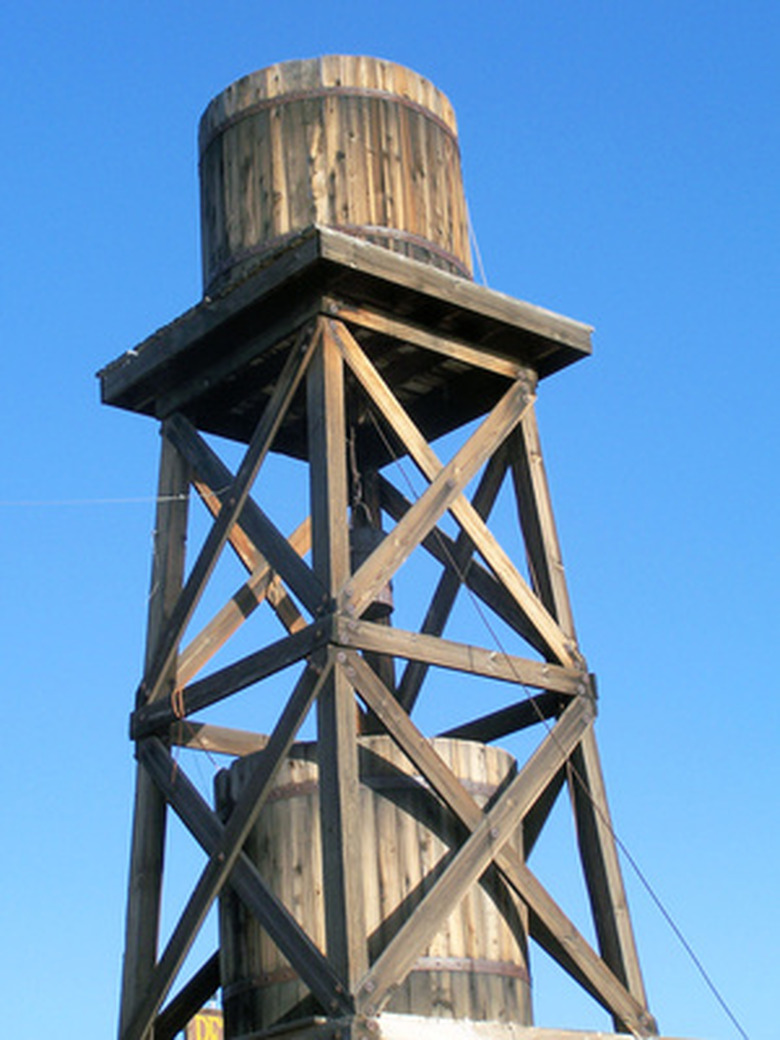How To Calculate Water Levels In A Tank
If you think you might be running out of water in your tank, then you should calculate how much water is left in the tank. Water tanks are normally cylindrical. In order to calculate the water level, you need to know approximately how high the water is in the tank, the radius of the tank and an estimation of pi, rounded to 3.14. After you calculate the volume, you need to convert the measurement into a liquid measure, such as gallons.
Step 1
Measure how high the water is in the tank, and from one side of the tank to the other side. You can estimate how high the water is approximately. To use an example, assume the water is about 4 feet high in the tank, and the distance from one side of the tank to the other side of the tank is 10 feet. This is the diameter.
Step 2
Divide the diameter by two to calculate the radius. In the example, 10 feet divided by two equals 5 feet.
Step 3
Square the radius to find the radius squared. In the example, five squared equals five times five, or 25.
Step 4
Multiply the radius squared by the height by pi to find the volume. In the example, 25 feet times 4 feet times 3.14 equals 314 cubic feet.
Step 5
Convert the cubic feet to the volume label you want to use. A volume converter is available on websites like Online Conversion. In the example, if you wanted to convert to gallons, 1 cubic foot = 7.4805 gallons, so 314 cubic feet times 7.4805 gallons equals 2,348.877 gallons.
References
Cite This Article
MLA
McBride, Carter. "How To Calculate Water Levels In A Tank" sciencing.com, https://www.sciencing.com/calculate-water-levels-tank-7648137/. 24 April 2017.
APA
McBride, Carter. (2017, April 24). How To Calculate Water Levels In A Tank. sciencing.com. Retrieved from https://www.sciencing.com/calculate-water-levels-tank-7648137/
Chicago
McBride, Carter. How To Calculate Water Levels In A Tank last modified March 24, 2022. https://www.sciencing.com/calculate-water-levels-tank-7648137/
